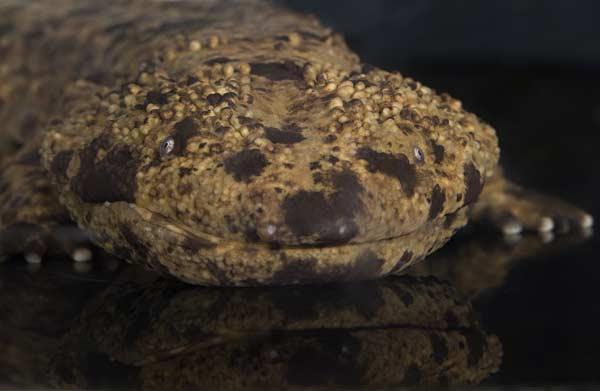Japan Gifts Giant Salamanders to U.S. National Zoo


A gift from Japan to the United States has brought Japanese giant salamanders to the Smithsonian National Zoological Park in Washington, D.C., to be part of a new long-term breeding program in the United States that may play an important role in saving amphibians around the globe.
Japanese giant salamanders live in cold, fast-flowing streams in Japan. Their numbers have been greatly reduced over the years because of agricultural development and habitat modification. They are listed as near threatened by the International Union for Conservation of Nature.
In addition, dams and culverts prevent them from migrating to nesting sites to mate. Japan is mitigating this problem by building fish ladders that allow the salamanders to get around the barriers.
Japanese giant salamanders belong to the Cryptobranchidae family of amphibians that includes the Chinese giant salamander and hellbenders, a native species found in Appalachian mountain streams.
"In conserving salamanders, we conserve the ecosystems in which they live," said Ed Bronikowski, senior curator at the National Zoo. "People share those same ecosystems, so what is good for the salamanders is good for many species, including us. We hope our visitors will learn from this generous gift to embrace our own diverse native salamander populations and protect healthy ecosystems for all."
The salamanders were given to the zoo by the City of Hiroshima Asa Zoological Park. With this gift, the Zoo hopes to become the first in the United States to successfully breed this species, which has not been bred outside of Japan in at least 100 years.
Four of the salamanders will live in the breeding center at the Zoo's Reptile Discovery Center, which mimics the living conditions of the salamanders at the Asa Zoo. One salamander, a 19-year-old female weighing 8 pounds and measuring 2.5 feet (0.8 meters) long, will be on exhibit on Asia Trail. All of the salamanders from Asa Zoo arrived at the National Zoo in December 2009.
Get the world’s most fascinating discoveries delivered straight to your inbox.
Amphibians worldwide face extensive threats, including habitat destruction, pollution and climate change. Nearly one-third of the world's more than 6,000 amphibian species are in danger of extinction, resulting in the worst extinction event since the time of the dinosaurs. One of the primary killers of amphibians is a fungus that causes a deadly skin disease called chytridiomycosis , or "chytrid." Zoo scientists will use the gift of the Japanese giant salamanders to learn more about chytrid, which does not appear to be lethal to this species.
The gift of the salamanders was celebrated July 22 with a visit from the Japanese Ambassador Ichiro Fujisaki.





